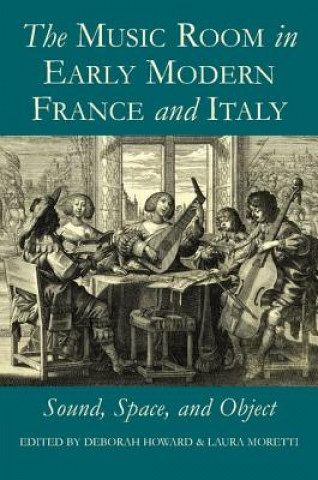
Kézbesítés
Vásárlási tanácsadó





Nem vált be? Semmi gond! Nálunk 30 napon belül visszaküldheti
 Ajándékutalvány
bármilyen értékben
Ajándékutalvány
bármilyen értékben
Ajándékutalvánnyal nem nyúlhat mellé. A megajándékozott az ajándékutalványért bármit választhat kínálatunkból.
Music Room in Early Modern France and Italy
 Angol
Angol
 244 b
244 b
30 nap a termék visszaküldésére
Ezt is ajánljuk


This interdisciplinary book investigates the use of secular space for music making in Early Modern France and Italy. The fact that many artists of the time also had musical skills underlines the close relationship between music and the visual arts. This era is remarkable for the growing importance of music in domestic life, ranging from elaborate court festivities to family recreation. In parallel with the emergence of the theatre as a separate building type, music-making in elite circles became more specialised through the employment of paid musicians, as opposed to amateur participation by the inhabitants and their guests. Meanwhile, however, music printing and the mass-production of instruments, especially lutes, allowed music-making to diffuse down the social scale. We see how spaces specifically designed for music began to appear in private dwellings, while existing rooms became adapted for the purpose. At first, the number of rooms specifically identifiable as 'music rooms' was very small, but gradually over the following 150 years, specialised music rooms began to appear in larger residences in both France and Italy. A major theme is the relationship between the size and purpose of the room and the kinds of music performed - depending on the size, portability and loudness of different instruments; the types of music suited to spaces of different dimensions; the role of music in dancing and banqueting; and the positions of players and listeners. Musical instruments were often elaborately decorated to become works of art in their own right.
Információ a könyvről
 Angol
Angol


 Kapcsolat
Kapcsolat Hogyan vásároljunk
Hogyan vásároljunk



















